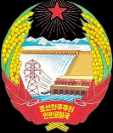This one’s for you, Jenny.
On Tuesday, with the day off for Korean Independence Day, I made my way to the Brooklyn Public Library’s Central branch, at Grand Army Plaza, and came home with an armload of books, among them Roadmap to Korean by Richard Harris (not the actor), a student of the Korean language, a resident in that country for five years at the time of publication, and a kindred spirit. His book is a compendium of useful concepts that he wishes he had, and now I wish I had, upon first arriving in Korea (example: an appendix with translations of typical ATM screens).
When we were in Korea, our school’s assistant director and our primary boss, James, was fond of prefacing every statement with “Maybe,” which led to much bafflement. “Maybe tomorrow is a holiday.” “Maybe you teach one extra hour tonight.” “Maybe I have to go to Seoul tomorrow.” Maybe? What the hell does that mean?
In a chapter about how Korean is a high-context language, meaning much is said indirectly or left understood based on context, Harris has this to say about Korean maybeism:
Another example of Koreans not being direct linguistically is the only-too-common, seemingly ubiquitous ‘maybe.’ Though some visitors to Korea don’t ever pick up on this, even after years of interaction with Koreans, the fact is that the Korean language itself is ladled with grammar structures that imply that something is not definite, when everyone knows it clearly is. That’s why Koreans, when speaking English, say things absolutely baffling with regards to the use of maybe.
Harris feels my pain!
He goes on to give a few examples of phrases that make sense in Korean but translate bizarrely into English, like “Maybe I can’t go to class” and “Maybe your sister’s tall.” They make more sense to me now, knowing what I know of Korean grammar. At the time, though, they left us completely at a loss. This is why I want to learn Korean so badly. Just as I needed to go back to Nepal and India a second time to find out what had so completely addled my mind on the first go-round, I feel now like the only way to work out what Korea was really about is to get inside the language.
No easy task, that, but I’m working on it.




 When you start to learn a language with the intention of really understanding it deeply, you quickly discover that there are many more aspects than the few taught by formal pedagogy. Most teaching systems will give you the writing system, grammar, standard vocabulary and a certain amount of listening comprehension. Beyond that, everyone wants to learn the slang and dirty words, which are rarely included in Beginning I textbooks.
When you start to learn a language with the intention of really understanding it deeply, you quickly discover that there are many more aspects than the few taught by formal pedagogy. Most teaching systems will give you the writing system, grammar, standard vocabulary and a certain amount of listening comprehension. Beyond that, everyone wants to learn the slang and dirty words, which are rarely included in Beginning I textbooks. On Tuesday, August 8, at 7:30 p.m., the 82-year-old Korean Living National Treasure dancer
On Tuesday, August 8, at 7:30 p.m., the 82-year-old Korean Living National Treasure dancer  There are certain flavors that I will always associate with summer: fresh blackberries hot from the sun and picked straight from the vine, chocolate milkshakes like my grandmother used to make when my best friend and I would watch Scooby Doo, ice-cold lemonade.
There are certain flavors that I will always associate with summer: fresh blackberries hot from the sun and picked straight from the vine, chocolate milkshakes like my grandmother used to make when my best friend and I would watch Scooby Doo, ice-cold lemonade.
